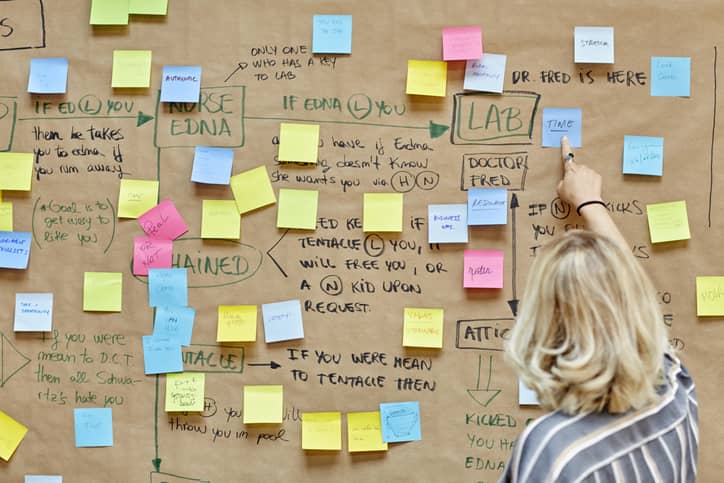How Variations on Traditional Brainstorming Can Boost Impact of Business Projects
Brainstorming has become almost ubiquitous in business today, and small wonder. Done right, it’s an effective way of harnessing the imagination and experience of a group to generate ideas while fostering a collaborative environment.
It’s also become a popular tool for Six Sigma initiatives, particularly as a means for driving thinking in the defining stages of the projects. For example, it works well as part of Failure Mode and Effects Analyses, as a tool to gather thinking about potential failure points of processes, systems or products.
 The term “brainstorming” was coined back in the 1960s by adman Alex F. Osborn as a description of methodologies he believed were key to achieving creative problem solving – in his instance, better ideas for ad campaigns.
The term “brainstorming” was coined back in the 1960s by adman Alex F. Osborn as a description of methodologies he believed were key to achieving creative problem solving – in his instance, better ideas for ad campaigns.
Through the years, formal and informal “ground rules” have been established that characterize brainstorming and help ensure optimal results.
The atmosphere for the session must be relaxed, for example, with a leader who can manage the flow of ideas without quashing creativity. A focus on quantity, not quality, is another given – it’s better to encourage participants to make new connections and offer more ideas. Judgments about their value can come later.
And of course, probably the most argued aspect of brainstorming is the rule prohibiting criticisms or negative judgments. The rationale behind this is the belief that negativity will stifle creativity for fear of ridicule.
Many agree with author Jonah Lehrer, though, who believes that “we find our best ideas once we stop pretending that every idea is a good one.” He quoted a study showing that ideation springing from “debate and dissent” sessions produced 25 percent more ideas (that were more original and useful) than typical brainstorming.
Variations in brainstorming models may help to counter where traditional brainstorming falls short. Here are four techniques that can be used with Six Sigma or any other business projects:
- Nominal Group Technique: Ideas are contributed anonymously and in writing, which the moderator has the group discuss and vote on in a distilling process. From here, highest-ranked ideas are worked on in further brainstorming, sometimes in subgroups to examine different facets. Then they are voted on again. This re-evaluation process sometimes opens the door to considering ideas that had been dropped as the context changes. This offers an equal say to all participants and also results in a refined ranking of ideas.
- Group Passing Technique: This method takes several forms, but essentially involves one person in the group writing down a single idea that is passed on to the next person to elaborate on. By the time it works its way through the group, it has gotten fairly fleshed out. A variation on this is to create an “idea book,” which takes longer but encourages deeper individual thinking about the issue being considered. The book is routed through a distribution list, with participants contributing new ideas or adding to those already posted. Ideas are discussed and refined in a meeting once everyone has contributed.
- Team Idea Mapping: Fueling the discussion is a well-defined topic that each participant brainstorms around individually. Ideas are gathered onto one idea map, during which time, group members share what their ideas mean, which encourages the free flow of new ideas, also added to the map. The result is a greater quantity of ideas and, often, improved collaboration.
- Electronic Brainstorming: Yes, technology has facilitated the brainstorming process, allowing what once was done in person and manually to be done via email or real-time applications. Group members contribute independently, with the leader listing their ideas and sending them back for further feedback and refinement. This approach enables a far larger group of participants than is manageable with traditional approaches. It also has an advantage in the ability to electronically store ideas for use at a later date.
Whatever methodology is used, brainstorming is a tool that offers a variety of benefits. It’s a way to encourage and improve group interaction and collaboration, and a great means to generate a variety of solutions and ideas – not the “best” – to issues that organizations face. By understanding the variations and their applications, and choosing techniques that mesh best with their needs, businesses can get the most out of their brainstorming sessions.



